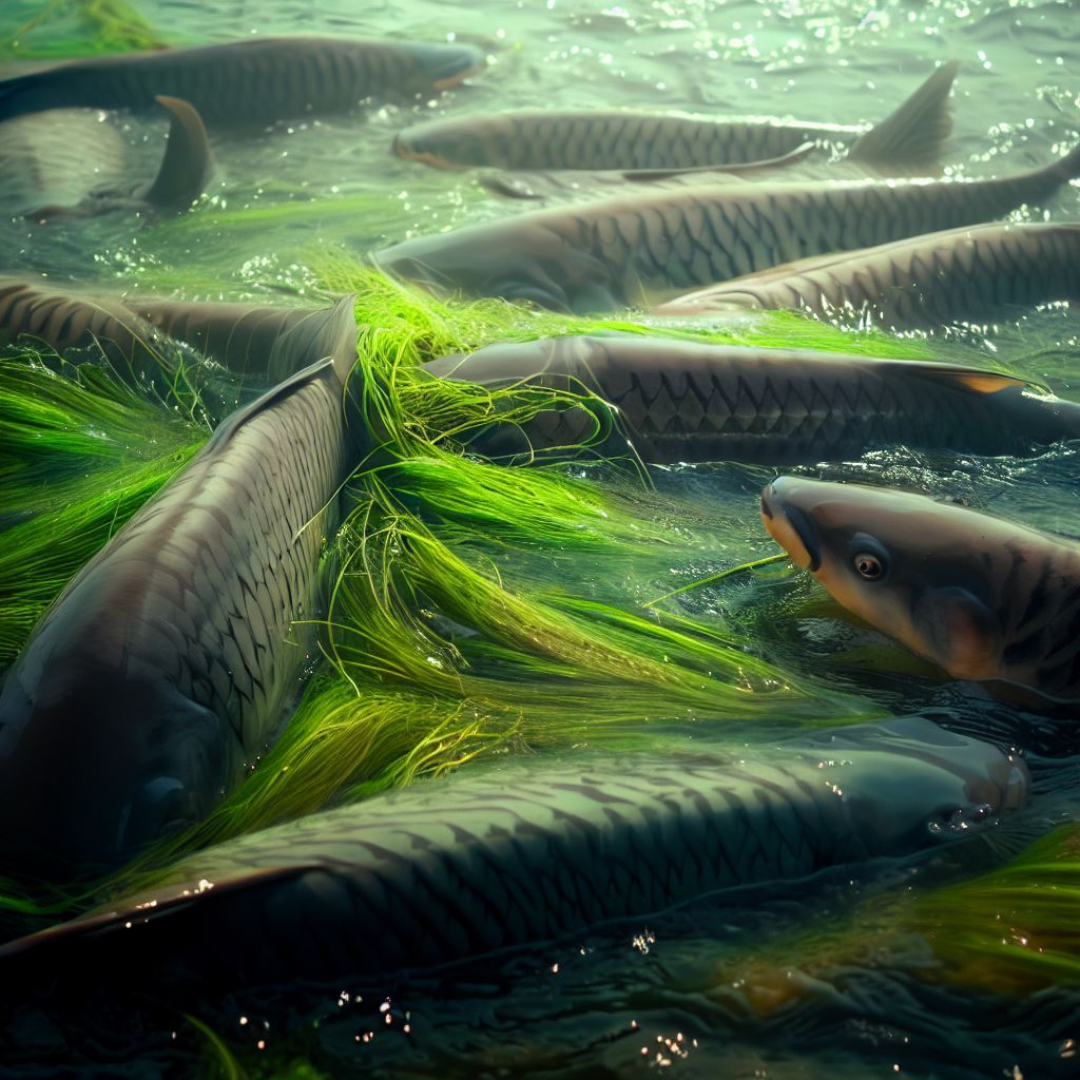Fisheries act as a substantial activity that provides direct employment to about 44.9 million individuals and contributes to around 15% of total animal protein consumption by humans.

The grass carp, scientific name Ctenopharyngodon idella, is a species of big herbivorous freshwater fish with a natural range that stretches from northern Vietnam to the Amur River on the Sino-Russian border. It is endemic to the Pacific Far East.
The only species of the genus Ctenopharyngodon is the Asian carp. According to the Food and Agriculture Organisation, aquaculture is the fastest-growing food production sector worldwide. It is directly involved in increasingly important sources of nutrition for the world’s population.
Aquatic animals account for 20% of animal protein in the human diet for over 40% of the world’s population, with the consumption increase surpassing that of all other animal protein sources combined. Asia made up the bulk of the world’s aquaculture production, accounting for 69 percent in 2018, with China alone accounting for 35 percent. Global aquaculture production reached 110.2 million tons in 2016.
Despite global aquaculture’s yearly growth rates falling to an average of 5.8% from 2000 to 2016, it keeps expanding at a greater rate than other main food processing industries.
Habitat
Grass carp live in lakes, ponds, pools, and the backwaters of big rivers. They like sizable, still bodies of water with lots of vegetation.
Gross carp as biological control
To constrain the spread of aquatic vegetation, grass carp were introduced into New Zealand in 1966. The New Zealand government has now given them approval for the management of aquatic weeds, but each application needs a separate permit.
Role of Fisheries in Society
Fisheries act as a substantial activity that provides direct employment to about 44.9 million individuals and contributes to around 15% of total animal protein consumption by humans.
Overfishing
River fisheries rapidly lost importance as pond fish culture emerged and developed quickly in the 1960s, along with the depletion of natural fish resources brought on by overfishing in rivers.
Research on grass carp
Fish is a high-quality protein with little fat and a lot of omega-3 fatty acids, vitamins, etc. Grass carp is a popular farmed fish that can feed on a variety of plant material, grows quickly to huge sizes, and produces high-quality meat. Intestinal microbial communities in grass carp are complex, and they are vital to many physiological functions of their host.
In fish, the gut microbiota helps to strengthen the digestive and immunological systems. Cellulose is a plant fibre, the most abundant carbohydrate and renewable resource in nature, and a significant element of the cell wall. The principal enzymes responsible for the breakdown of cellulose are cellulases, produced by microbes, primarily bacteria and fungi.
Cellulase enzymes are critical for achieving many important benefits of biomass utilization by converting the cellulosic material into the most basic carbohydrate monomer, glucose. This study aimed to isolate and identify the major cellulase-synthesising microbiota in the intestine of Ctenopharyngodon idella.
Bacterial colonies were grown on a CMC agar medium (carboxymethyl cellulose) to study the total viable count of the bacterial community and for the identification of EPS. Bacteria were identified from the Bergeys manual of bacteriology. Bacillus, Enterobacter, Enterococcus, Citrobacter, Aeromonas, Bacteroidetes, Pseudomonas, Anoxybacillus, and Leuconostoc
Clostridium and Actinomyces dominate the cellulolytic microflora in grass carp. Cellulose hydrolysis by these microbes was detected by a Congo red binding assay. One-way analyses of variance (ANOVA) were used for statistical analysis. This research shows that the gut microbiota of grass carp is involved in glucose retention and fermentation, providing both the host and the microflora with energy.
Purpose of Research
- To find out the role of cellulose-degrading fungi and bacteria in the healthy grass carp intestine.
- To find out the role of cellulose-degrading fungi and bacteria in the intestines of unhealthy grass carp
Methodology
About sixty grass carp of different weights were collected from the fish hatchery. Cellulolytic bacteria were isolated using the enrichment culture technique. Culture media for microbiological contents was prepared with the help of distilled water and then kept in an autoclave for 15 minutes at about 121°C.
To avoid contamination and any kind of chemical reaction, every instrument and glassware were cleaned and dried properly. Standardised and high-quality chemicals were used in the experiment. Microbial strains were found by culturing them on carboxymethyl cellulose (CMC) agar medium.
Analysis
Using a one-way analysis of variance, statistical analysis was done to find the quantitative data of the bacterial population present in the grass carp’s intestine, skin, and flesh (ANOVA).
Conclusion.
Grass carp in normal rivers and lakes just consume hydrophytes. Since they must have a process in effect to utilise plant materials efficiently, cellulase may be crucial to their digestive system. Cellulase-producing bacteria in the gut of grass carp likely help with nutrition because grass carp cannot generate cellulase on their own.